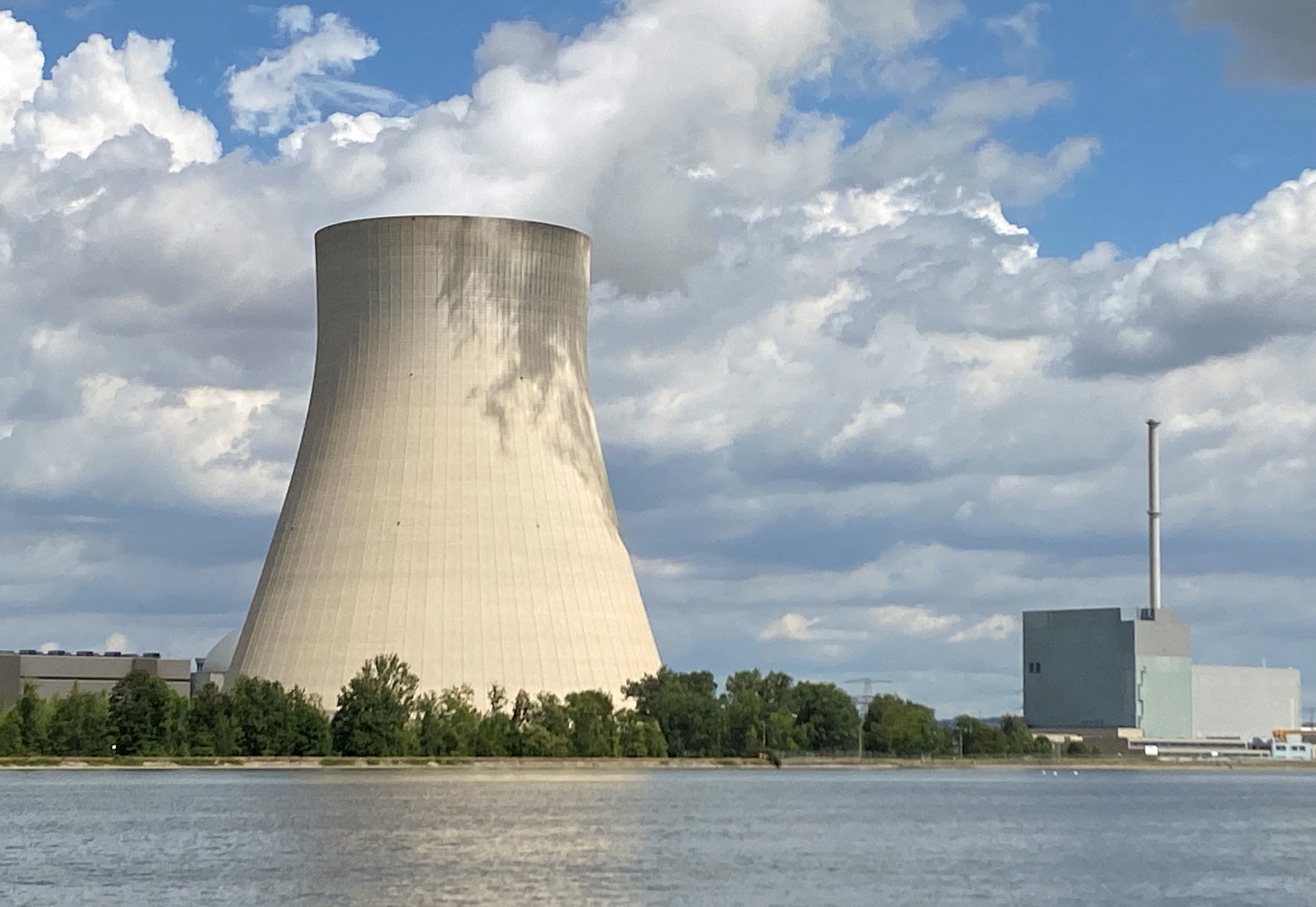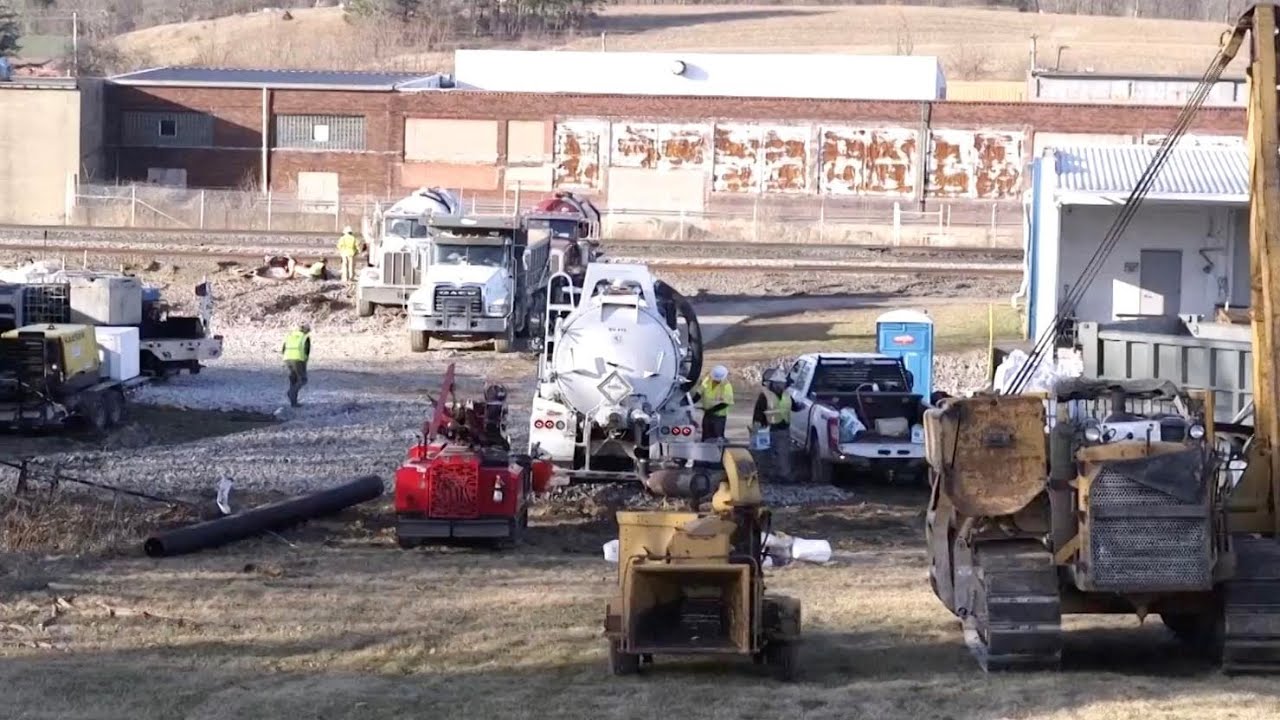Expediting Nuclear Power Plant Construction: A Trump Administration Plan?

Table of Contents
Proposed Regulatory Reforms for Expediting Nuclear Power Plant Construction
The Trump administration sought to streamline the process of building nuclear power plants through significant regulatory reforms. This involved targeting the Nuclear Regulatory Commission (NRC) and incentivizing the development of advanced reactor technologies.
Streamlining the Nuclear Regulatory Commission (NRC) Approval Process
The administration proposed several changes to expedite the NRC approval process, aiming to reduce bureaucratic hurdles and shorten review times for new nuclear power plant projects. Key proposals included:
- Reduced paperwork: Simplifying the application process and reducing the volume of documentation required for licensing.
- Faster review times: Setting stricter deadlines for NRC reviews and implementing more efficient review procedures.
- Pre-approved standardized designs: Allowing for pre-approval of standardized reactor designs, reducing the need for extensive individual reviews.
- Potential for parallel review: Allowing for simultaneous review of different aspects of a project, rather than a sequential approach, to save time.
These proposals aimed to reduce the overall timeline for obtaining necessary licenses and permits, a major bottleneck in traditional nuclear power plant construction. However, critics argued that such streamlining could compromise safety and regulatory oversight, raising concerns about potential environmental and public health risks. The debate centered around balancing the need for faster approvals with the paramount importance of maintaining stringent safety standards. Specific legislative proposals and executive orders related to these reforms should be examined for a complete understanding.
Incentivizing Advanced Reactor Technologies
Another key component of the Trump administration's plan involved incentivizing the development and deployment of advanced reactor technologies, particularly small modular reactors (SMRs). The goal was to leverage innovation to potentially achieve faster and more cost-effective construction. The proposed incentives included:
- Tax credits: Offering tax breaks to companies investing in advanced reactor technologies.
- Loan guarantees: Providing government-backed loans to mitigate the financial risks associated with developing and deploying SMRs.
- Expedited licensing procedures: Streamlining the licensing process specifically for advanced reactor designs, recognizing their potential safety and efficiency advantages.
This approach aimed to encourage private sector investment in advanced reactor development, fostering competition and driving down costs. The expectation was that these newer designs, often smaller and more modular, would be faster to build and deploy than traditional large-scale reactors. However, the long-term viability and scalability of these technologies still needed to be proven, along with managing the potential risks involved in deploying relatively untested designs.
Addressing Financial and Infrastructure Challenges
The high capital costs and complex infrastructure requirements associated with nuclear power plant construction represent significant hurdles. The Trump administration addressed these challenges through several financial and infrastructure initiatives.
Securing Project Financing and Investment
Attracting private investment in nuclear power plants is crucial. The administration attempted to address this through several mechanisms:
- Government-backed loan programs: Offering low-interest loans and loan guarantees to reduce financial risks for investors.
- Tax breaks for investors: Providing tax incentives to attract private capital into the nuclear energy sector.
- Public-private partnerships: Facilitating collaboration between government agencies and private companies to share the financial burden and expertise.
The cost of constructing nuclear power plants is substantial, often running into billions of dollars. Government support, in the form of the measures listed above, was intended to mitigate these costs and make projects more attractive to investors. Data on the specific costs of various nuclear projects and the extent of government support would offer a clearer picture of the success of these financial strategies.
Improving Supply Chain Efficiency
A robust and efficient supply chain is essential for timely construction. The administration acknowledged this and proposed strategies to address potential bottlenecks:
- Investing in domestic manufacturing of nuclear components: Reducing reliance on foreign suppliers and strengthening the domestic nuclear industry.
- Streamlining permitting and transportation processes: Improving the speed and efficiency of obtaining permits and transporting materials for construction.
Addressing potential delays due to supply chain issues was crucial to expediting the overall construction timeline. This included consideration of trade policies and their impact on the availability of necessary components. Analyzing the administration’s efforts to support domestic manufacturing and streamline logistics would be vital in evaluating their overall strategy.
The Impact of the Trump Administration's Approach
Assessing the true impact of the Trump administration's policies requires careful evaluation of both successes and shortcomings.
Successes and Shortcomings
Measuring the success of these initiatives is complex and requires a multifaceted approach. Key metrics to consider include:
- Number of new nuclear projects initiated: How many new projects were started during this period compared to previous years?
- Actual reduction in construction times: Did the proposed regulatory and financial reforms lead to a measurable reduction in construction time for nuclear plants?
- Impact on employment in the nuclear sector: Did these initiatives stimulate job growth in the nuclear energy sector?
A thorough analysis of these factors would be needed to determine the extent to which the administration's goals were met. This analysis should compare the actual results with the stated aims of the proposed policies.
Long-Term Implications for the Nuclear Industry
The long-term consequences of the Trump administration's policies on the nuclear industry require further examination. Key areas of analysis include:
- Impact on future nuclear power development: To what extent did these policies shape the future trajectory of nuclear power development in the US?
- Changes to the regulatory landscape: What lasting changes to the regulatory framework for nuclear power were implemented as a result of these initiatives?
- Influence on global nuclear energy trends: Did these policies have any influence on global nuclear energy trends and international collaborations?
The sustainability of the policies implemented beyond the Trump administration is a crucial consideration. The long-term effects on the regulatory landscape and investment climate for nuclear power will determine their ultimate success or failure.
Conclusion
The Trump administration's attempts to expedite nuclear power plant construction represented a significant effort to revitalize the nuclear energy sector. While the success of these initiatives remains a subject of ongoing debate, the policies implemented highlight the significant challenges and opportunities associated with accelerating a complex and capital-intensive industry. Understanding these attempts provides valuable insight into the ongoing effort to balance energy needs, economic growth, and regulatory oversight in the development of nuclear power. Further research is needed to fully assess the long-term impacts of the policies focused on expediting nuclear power plant construction and to identify best practices for future initiatives. This requires a continued, thorough examination of the strategies employed and their effectiveness in achieving the overall goal of expediting nuclear power plant construction.

Featured Posts
-
 Investigation Into Lingering Toxic Chemicals After Ohio Train Derailment
May 11, 2025
Investigation Into Lingering Toxic Chemicals After Ohio Train Derailment
May 11, 2025 -
 Uruguay A Rising Star In The International Film Industry
May 11, 2025
Uruguay A Rising Star In The International Film Industry
May 11, 2025 -
 Alsn Lys Eayqa Elaqt Mhtmlt Byn Twm Krwz Wana Dy Armas Farq 26 Eama
May 11, 2025
Alsn Lys Eayqa Elaqt Mhtmlt Byn Twm Krwz Wana Dy Armas Farq 26 Eama
May 11, 2025 -
 Nine Faces One Destiny The Vaticans Search For Pope Franciss Successor
May 11, 2025
Nine Faces One Destiny The Vaticans Search For Pope Franciss Successor
May 11, 2025 -
 New York Knicks Secure Second Consecutive Overtime Win Against Chicago Bulls
May 11, 2025
New York Knicks Secure Second Consecutive Overtime Win Against Chicago Bulls
May 11, 2025
